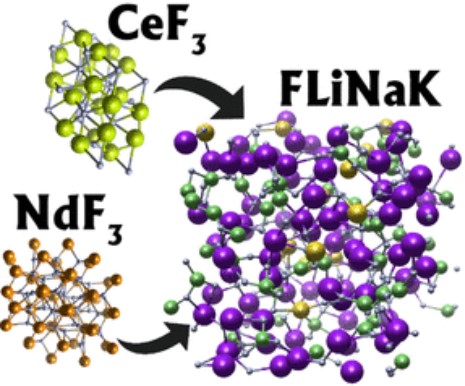MEPhI scientists together with colleagues from the Institute of High Temperature Electrochemistry (IHTE) of the Ural Branch of the Russian Academy of Sciences studied the interaction of molten salts LiF, NaF, KF with nuclear waste. In their opinion, this will allow the development of an effective technology for the disposal of hazardous waste. The results of the study were published in the Journal of Physical Chemistry B.

A mixture of molten salts (LiF, NaF, KF) is a promising solvent for nuclear waste, since it provides rapid decomposition of radioactive elements and good heat removal.
Scientists from different countries also offer options for using molten salts with uranium dissolved in them as nuclear fuel. To develop such technologies, it is necessary to know how the viscosity and thermal conductivity of the solution change at different temperatures.
Researchers from MEPhI and IHTE RAS carried out field and computer simulations of these solutions. In experiments, they replaced radioactive actinides (thorium and uranium) with less dangerous lanthanides (cerium and neodymium), which have similar physical and chemical properties.
“In computer simulation, we used a multiscale approach: first, we calculated the interaction parameters of the solution elements based on the laws of quantum mechanics and then used them in molecular dynamics. As a result, we managed to achieve good agreement between the calculated and measured characteristics of solutions of cerium and neodymium in molten salts (first of all, the temperature dependences of the self-diffusion coefficient and shear viscosity)," said Professor of the MEPhI Konstantin Katin.
By 2031, Rosatom State Corporation plans to launch Russia's first liquid-salt research reactor in Zheleznogorsk, designed to burn long-lived nuclear waste. The developed modeling technique, according to scientists, will optimize the process of waste afterburning and replace some of the expensive tests with cheaper “computer experiments”.





